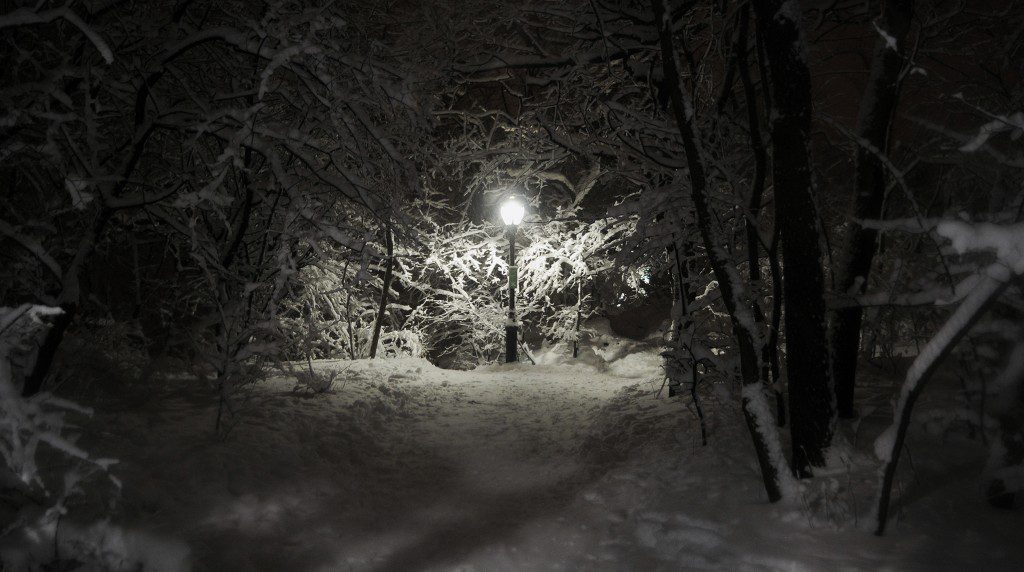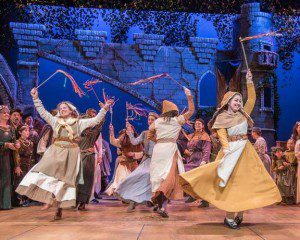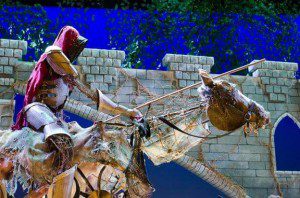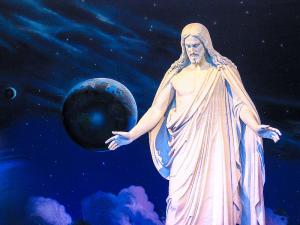
I.
Some of my fascination with The Last Battle, the last in C.S. Lewis’s Chronicles of Narnia, might stem from the draw of the bittersweetness of finality and my awe (in the dual senses of “awesome” and “awful”) at apocalypse. But good portion of it derives from Narnia’s heaven, one of the most compelling visions of a literal, Christian heaven in literature.
Mr. Tumnus explains a key aspect of this heaven: there, “no good thing is destroyed.” At its most straightforward, Mr. Tumnus is referring to physical objects; the sight that prompts his remark is that of the Professor’s old house, to which the Pevensie children were exiled during the Blitz, through which they first encountered Narnia, and which had been demolished in the Earth they’d known. The geography itself is proper in both senses of rightness and belonging: as Jewel the Unicorn declares, “I have come home at last! This is my real country! I belong here. This is the land I have been looking for all my life, though I never knew it till now.”
What is more, all the characters we have come to know and love over the course of the previous six books, even those who had passed away sometime in Narnia’s deep history, here live on in communion. Narnia’s heaven preserves, sanctifies, and celebrates all good human (and nonhuman!) relationships; here, the same sociality that existed in the mortal world is inseparably coupled with a new glory.
(And contrary to most Mormon talk of heaven, relationships outside of nuclear families have a significant place in Lewis’s afterlife. The reunions of long-separated friends he depicts overwhelm me.)
Lewis also described heavenly life as the “Great Story which no one on earth has read: which goes on forever: in which every chapter is better than the one before” and for which “all their life in this world and all their adventures in Narnia had only been the cover and the title page.” When I was young and not yet familiar with the traditional Christian theology to which Lewis adhered, I took this as an intimation of eternal progression and, very Mormonly, was disappointed that Lewis never bothered to write these amazing adventures.
When I first read through the Bible in high school, I discovered Revelation 21:4, which encapsulated what I loved about Lewis’s Narnian heaven: “And God shall wipe away all tears from their eyes; and there shall be no more death, neither sorrow, nor crying, neither shall there be any more pain: for the former things are passed away.”
Not only would nothing good find its end, but evil and suffering were barred forever from entry.
II.
I spent the last months of 2015 preparing to act in a Christmas production about, among other things, Death.
The Christmas Revels is a production like no other: an amateur chorus with some professional actors and musicians, all in sumptuous costume, singing songs, dancing dances, and engaging the audience in, well, revelry. And though it is called the Christmas Revels, each annual production hearkens back to the reason for the placement of Christmas in December: the northern hemisphere’s winter solstice. As Susan Cooper’s poem, recited near the end of each show, goes:
So the Shortest Day came and the year died
And everywhere down the centuries of the snow-white world
Came people singing, dancing,
To drive the dark away.

This year’s Christmas Revels in Washington, DC, doubled down on the symbolism of the cycles of nature. In it, a medieval royal court and village host a solstice celebration to which they invite mysterious woodland creatures and their queen. The raucous party that ensues comes to an abrupt end with the entrance of a spectral horse and his snow-dusted, skull-faced rider.

The woodland folk kneel in deference—they know who the rider is—but the others reel back in terror. The King, duty-bound to protect his people, challenges the interloper to battle. To the horror of his subjects, the chill wind from the rider’s lance fells the king.
(Yes, this is a Christmas show.)
Seeing the king fallen, the king’s fool engages the horse and his rider with silliness and the ghostly visitors depart in laughter. But the king, already mortally wounded, retreats to a tomb in the hill, disappearing underground. Snow begins to fall as the sun sets on the shortest day.
Interrupting the mourning and uncertainty, the woodland queen’s fool tells us that the king might return with the coming of spring.
In this valley of the shadow of death, the end of Act 1, a soloist emerges to sing Sidney Carter’s “Lord of the Dance,” which recounts in the first person Jesus’s life, death, and resurrection. After the verses, the cast of the show joins hands in lines and dances down through the aisles of the theater out to the lobby, bringing along any audience members who wish to join them. It was this scene that inspired Peter Smith, a theater manager, to write,
I have no idea—any more than anyone else has, of course—of what happens at the moment of death. But if it is something other than encountering oblivion, I realize that I cannot conceive of anything I would more joyfully welcome than having my hand taken by someone—a complete stranger, perhaps from the other side of the globe—who had died in the millisecond before me, someone who brings me into a very wide aisle and an infinitely long chain of people who are reveling in a dance which is a dance of life rather than a dance of death, people who are all connected, through their handholding, not only to one another but also, at the point where the line begins, to the one who is indeed the Lord of the Dance.
The planet spins and death turns to rebirth. There are tears and will always be. For all human purposes, the seasons turn in an eternal round. But just as we bear winter by means of friends’ company and joviality, even so can we bear death and sorrow. We mourn and rejoice together:
And when the new year’s sunshine blazed awake
They shouted, revelling.
III.
I had a troubling epiphany one day in college.
On one hand, Revelation 21:4—especially in Lewis’s hands—promises an ultimate end to sorrow.
On the other, Enoch saw God weep over the suffering and misery of his children, and the Mormon doctrine of the co-specificity of God and humankind teaches that, as we are of the same species, and humans’ destiny is not to partake in the presence of a wholly other being or to acquire the traits of Deity, but to become gods.
If we are to become gods and yet gods weep, what are we to make of Narnia’s heaven, which promises us freedom from tears? What are we to make of Revelation 21:4 if God sorrows, cries, and hurts?
I do not claim any ability to ultimately resolve this tension, but there are a few options I can think of.
Perhaps further light and knowledge abrogate the linear chronology of Revelation and replace it with the cycles of growth through which eternal progression operates, and we must forgive the aspiration of the sufferer to be forever free of pain and trouble.
And perhaps the Revels and the solstice celebrations—yes, celebrations in, and even of, the darkest hour!—can provide us with a needed interpretive tool: society. In the Mormon heaven, we are sealed to one another, ritually bound. And we covenant to mourn with those that mourn, to comfort those who stand in need of comfort.
Perhaps the secret of heaven is that someone next to you is willing to wipe away your tears. And when you’re ready, they’ll offer a smile and a hand to pull you on in the eternal dance.












